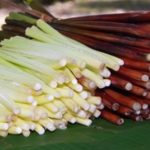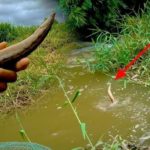Tram Chim National Park has been gaining a lot of attention for its simple beauty and diverse range of rare animals. Today, join us on a journey to the Western region of Vietnam as we explore this fascinating destination.
1 An Introduction to the Ecosystem of Tram Chim National Park
 An Overview of the Ecosystem at Tram Chim National Park
An Overview of the Ecosystem at Tram Chim National Park
Spanning across seven communes (including Tan Cong Sinh, Phu Hiep, Phu Tho, Phu Duc, Phu Thanh A, and Phu Thanh B), Tram Chim National Park is located in Tam Nong District, Dong Thap Province. It covers an area of over 7,500 hectares and boasts an incredibly diverse and rich ecosystem, showcasing the unique beauty of the Mekong Delta region.
Currently, the national park is divided into distinct vegetation communities that intertwine with one another (including lotus, floating rice, water spinach, and mangrove communities, as well as melaleuca forests and swamps). It is also home to a diverse flora, boasting over 130 plant species, and an impressive avian population with more than 233 bird species from 25 genera and 49 families.
Notably, several rare bird species make their home in Tram Chim, including the white-winged duck, grey-headed fish eagle, swamp grassbird, painted stork, and the endangered Sarus crane. Additionally, a few fish species listed in Vietnam’s Red Data Book, such as the snakehead murrel, spotted snakehead, and tiger perch, play a crucial role in maintaining the ecological balance of the park.
2 When is the Best Time to Visit Tram Chim National Park?
 The Ideal Time to Explore Tram Chim National Park
The Ideal Time to Explore Tram Chim National Park
True to the saying, “six months of dry land and six months of flooded fields,” each season at Tram Chim National Park offers a unique and captivating experience. Specifically, during the flood season from September to December (by the lunar calendar), visitors will be treated to a stunning natural spectacle of blooming water lilies and lotuses, accompanied by the gathering of hundreds of bird species.
On the other hand, the dry season, which lasts from February to May, presents a different kind of beauty. It is the perfect time to immerse yourself in the lush and serene beauty of the ecosystem at Tram Chim and, more importantly, to witness the impressive dances of the Sarus cranes—a rare and majestic bird species belonging to the crane family.
3 How to Get to Tram Chim National Park?
Located about 145 kilometers from Ho Chi Minh City, there are several travel options to reach Tram Chim National Park:
By Bus
 Traveling to Tram Chim National Park by Bus
Traveling to Tram Chim National Park by Bus
With a fare ranging from 100,000 to 150,000 VND per trip, you can opt for reputable bus companies such as Tam Quoc Minh and Hoang Minh, operating on the Ho Chi Minh City-Dong Thap route. The journey will take approximately 3 to 4 hours.
By Personal Vehicle (Motorcycle or Car)
 Traveling to Tram Chim National Park by Personal Vehicle
Traveling to Tram Chim National Park by Personal Vehicle
If you’re departing from Ho Chi Minh City, follow the Trung Luong-Tan An-Tan Thanh route until you reach the My An-Moc Hoa intersection, then turn towards Truong Xuan. From there, continue to Tam Nong District, cross the Tram Chim Bridge, and after 800 meters, you will find the national park on your left.
For those starting from Cao Lanh, a different route of about 35 kilometers is more convenient. Simply head out from the city center (near the Cao Lanh Children’s Park on April 30th Street), follow National Highway 30 to the intersection near the Thanh Binh District Medical Center, and then turn right, and you will arrive at Tram Chim.
By Air
 Traveling to Tram Chim National Park by Air
Traveling to Tram Chim National Park by Air
If you’re traveling from farther regions like the North or Central Vietnam, flying is a convenient option. With airfare starting at 681,000 VND per trip, you can land at either Tan Son Nhat or Can Tho International Airport and then take a bus to Tram Chim town in Dong Thap Province to visit the national park.
4 What to Do in Tram Chim National Park?
Scenic Boat Ride
 Enjoying a Boat Ride at Tram Chim National Park
Enjoying a Boat Ride at Tram Chim National Park
Glide along the serene canals and experience the tranquility of a boat ride as you take in the breathtaking scenery of the national park. With innumerable birds soaring overhead and their melodious chirps filling the air, you can also make your way to the viewing tower to climb up and immerse yourself in the expansive and lush landscape.
Experience the Flood Season
 Experiencing the Flood Season at Tram Chim National Park
Experiencing the Flood Season at Tram Chim National Park
Visiting Tram Chim National Park during the flood season offers a spectacular display of blooming lotuses and water lilies, along with the opportunity to engage in traditional folk activities such as rowing three-leaf boats, setting up bird nests, casting nets, fishing, hunting field mice, and harvesting rice.
Moreover, the flood season is also a breeding ground for hundreds of unique and rare bird species. As a result, you may be lucky enough to spot the adorable nests of birds like the purple swamphen and the watercock.
Admire the Sarus Cranes
 Admiring the Sarus Cranes at Tram Chim National Park
Admiring the Sarus Cranes at Tram Chim National Park
Considered one of the rarest and most characteristic bird species of the Tram Chim area, the Sarus crane stands out with its vibrant plumage and energetic dances. To witness these majestic birds, plan your visit to the national park during the dry season, which extends from December to May (by the lunar calendar).
5 What to Eat in Tram Chim National Park?
After immersing yourself in the serene natural surroundings, be sure to indulge in the simple yet delightful cuisine of the Mekong Delta, infused with the flavors of the countryside. Here are some signature dishes you shouldn’t miss:
 Delicious Local Specialties at Tram Chim National Park
Delicious Local Specialties at Tram Chim National Park
- Smoked snakehead fish
- Fried snakehead fish cakes
- Grilled field eel
- Dried snakehead fish
- Crispy fried snakehead fish cakes
- Seared eel with lemongrass
Additionally, if you visit during the flood season when lotuses are in full bloom, you’ll have the chance to savor delicacies like lotus seed rice, red dragon rice wrapped in lotus leaves, grilled snakehead fish rolled in young lotus leaves, and more.
6 Hotels Near Tram Chim National Park
Tram Chim Homestay
 Tram Chim Homestay
Tram Chim Homestay
Quality Rating: 4.4/5 (Google Rating)
Address: Tram Chim Town, Tam Nong District, Dong Thap Province
Price Range: Approximately
Opening Hours: All day
Phone Number: 01254905128
Facebook: Homestay – Tram Chim National Park
Pros: Friendly and accommodating host; Easy access to natural attractions
Cons: Smaller homestay
Tram Chim Homestay offers a cozy and well-equipped accommodation, along with a convenient location that allows easy access to scenic spots for rice and lotus cultivation, as well as fish farming. This makes it an ideal choice for those seeking a peaceful getaway surrounded by nature.
Sky Hotel Hong Ngu
 Sky Hotel Hong Ngu
Sky Hotel Hong Ngu
Quality Rating: 4.1/5 (Google Rating)
Address: 39 Nguyen Tat Thanh, An Thanh Ward, Hong Ngu City, Dong Thap Province
Price Range: Approximately 620,000 VND per night, per person
Opening Hours: All day
Phone Number: 02773987666
Facebook: SKY HOTEL HONG NGU
Pros: Outdoor swimming pool and spa services; Central location for easy travel and sightseeing
Cons: Rooms fill up quickly, especially during holidays
Sky Hotel Hong Ngu provides a comfortable stay with various amenities and is highly regarded for its central location, making it convenient for guests to explore the area. Notably, it is also the first hotel in Dong Thap Province to receive a three-star rating.
Sao Mai Hotel Cao Lanh
 Sao Mai Hotel Cao Lanh
Sao Mai Hotel Cao Lanh
Quality Rating: 4.0/5 (Google Rating)
Address: 178 Nguyen Hue, Ward 2, Cao Lanh City, Dong Thap Province
Price Range: Approximately 630,000 VND per night, per person
Opening Hours: All day
Phone Number: 02776268268
Facebook: Khach San Sao Mai




































